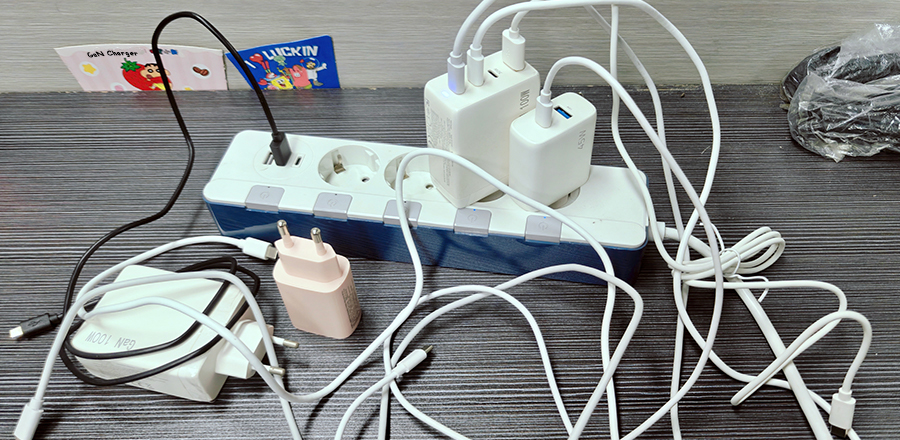Why Leaving Your Phone Charger Plugged In Might Be More Dangerous Than You Think
Or: Why is the mobile phone charger always plugged into the socket?
Let’s be honest: we’ve all done it. You unplug your phone, walk away, and leave the charger still in the wall socket—sometimes for hours, days, or even weeks. But is this harmless habit actually safe? Or are you unknowingly putting your devices—and your home—at risk?
Let’s plug into the truth.

🔥 1. What Happens When a Charger Is Always Plugged In?
Even when it’s not charging a device, your charger is still drawing a small amount of power. This is called "vampire power" or standby power, and while it may only cost you a few cents per month, the risks go beyond electricity bills.
⚠️ Potential dangers:
Overheating (especially with old or poor-quality adapters)
Electrical arcing or short circuits
Fire hazards if the socket or charger is damaged
Phone gets hot when charging (if the power flow is unstable)
💥 2. Real Risks: Cheap Chargers vs. Certified Ones
Using uncertified or low-cost chargers increases the chance of:
· Overvoltage problems
· Inconsistent current output
· Heat buildup that can degrade internal components
Even when it’s not charging a device, your charger is still drawing a small amount of power. This is called "vampire power" or standby power, and while it may only cost you a few cents per month, the risks go beyond electricity bills.
⚠️ Potential dangers:
Overheating (especially with old or poor-quality adapters)
Electrical arcing or short circuits
Fire hazards if the socket or charger is damaged
Phone gets hot when charging (if the power flow is unstable)
💥 2. Real Risks: Cheap Chargers vs. Certified Ones
Using uncertified or low-cost chargers increases the chance of:
· Overvoltage problems
· Inconsistent current output
· Heat buildup that can degrade internal components
Always choose a certified charger, especially if you’re using high-speed charging standards like:
· USB-C vs USB-A charger setups (USB-C delivers more power)
· PD chargers (like PD 3.0 or PD 3.1 for laptops or iPads)
· GaN chargers, which are more power-efficient and run cooler
✅ Pro tip: Use an OEM Samsung charger or OEM Apple charger with proper CE, RoHs, KC, GRS, FCC, or UL certification to avoid safety risks.
⚙️ 3. How New Chargers Handle Always-On Power
Modern chargers, especially GaN (Gallium Nitride) models, are much safer when left plugged in thanks to:
· Lower standby power draw
· Auto power cutoff when no device is detected
· Smaller size = better heat dissipation
Still, even the best PD fast chargers and USB Type-C 5A cables can degrade over time if constantly energized.
📌 4. Expert Tips: Safe Use of Chargers
| Do This | Avoid This |
| Unplug whne not in use | Leaving in hot or humid areas |
| Use high-quallty charging cables (e.g., 5A USB-C cable,100W charging cable) |
Using damaged or loose wall outlets |
| Stick to certified OEM chargers | Relying on cheap or unbranded knockoffs |
| Use deaktop chargers for office setups | Daisy-chaining multiple adapters |
If you have never cared about these, it is recommended that you pay more attention to whether the charger meets modern certifications and supports the following power protocols when purchasing:
· USB PD 3.0 / 3.1
· Quick Charge 4.0 / 5.0
· PPS (Programmable Power Supply)

🌐 5. Final Thought: Is It Dangerous to Always Leave a Charger Plugged In?
Short answer? It depends on the charger.
Short answer? It depends on the charger.
Leaving a modern GaN charger or a certified OEM USB charger plugged in may be relatively low-risk—but older or non-certified models can be fire hazards waiting to happen.
So next time you unplug your phone, think twice. Is it really that hard to unplug the charger too?
🚀 You Might Also Like:
🔗 Super Fast Charging vs Fast Charging – The 2025 Guide for Brands & OEMs
🔗 How to Read Charger Parameters Like a Pro – Voltage, Wattage & More